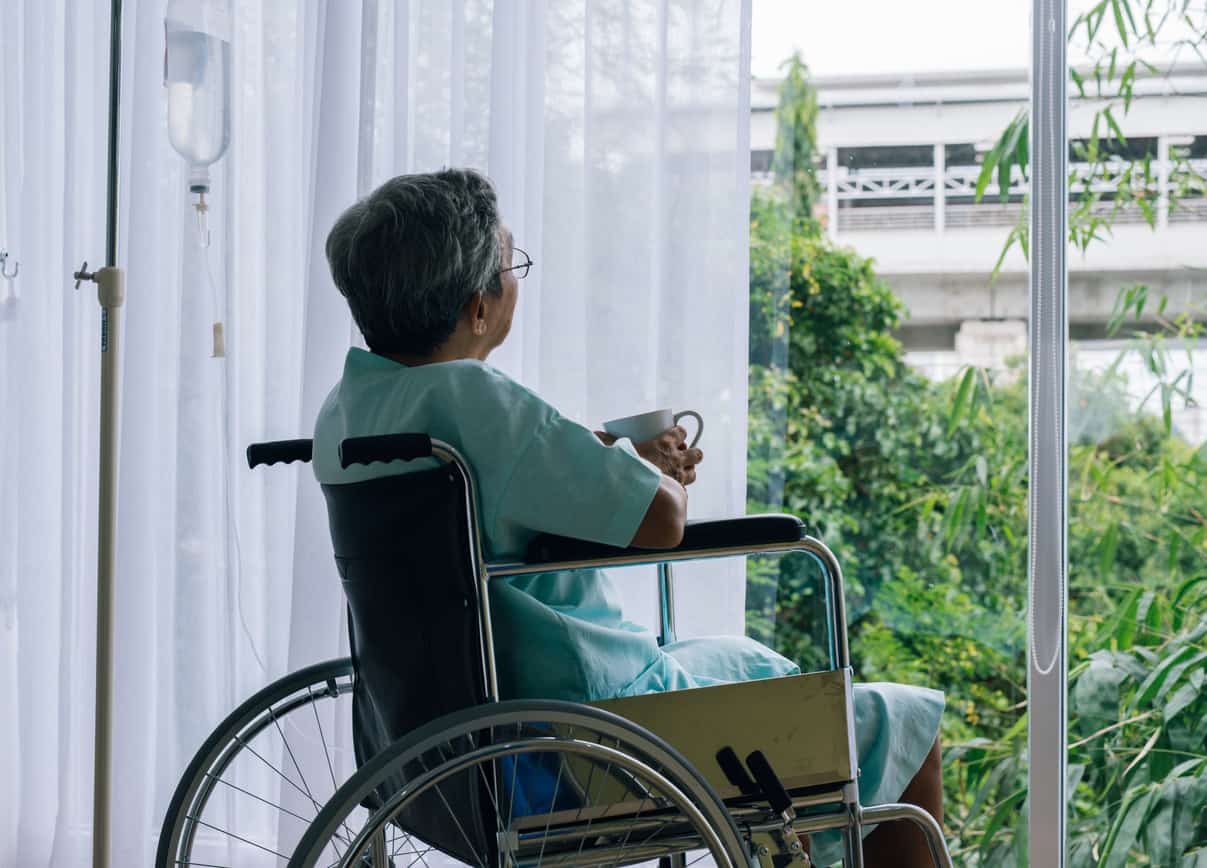Home Health Series – The Challenges to Widespread Implementation of Hospital at Home Programs
Liability, lack of infrastructure, and reimbursement at forefront of key obstacles

THE VBP Blog
September 21, 2023 – As we covered in our last Home Health Series blog, the hospital at home model moves patient care away from brick-and-mortar hospitals and into the comfort of their home. The model is designed to lower costs and improve patient experiences, but also has the potential to expand care delivery for other sectors of the healthcare industry as well.
However, as the hospital at home market increases and more key players are drawn to the new care delivery model, there are still challenges that limit the widespread implementation of hospital at home programs. Keep reading the fourth blog in our Home Health Series for an in depth look at the challenges facing the hospital at home model and how the industry can overcome them.
Quick Recap: What is Hospital at Home and Who Are the Key Players?
For a quick recap of our last Home Health Series blog, How Hospital at Home is Revolutionizing Patient Care, the hospital at home model offers patients the opportunity to receive hospital-grade care within the comfort of their own homes. This model is not only cost-effective due to reduced overheads but also enhances patient satisfaction, as studies indicate that recovery can be quicker in familiar settings.
Pioneered by institutions like Johns Hopkins, these programs have shown positive results. National studies have echoed these findings, emphasizing the safety, cost-effectiveness, and efficacy of hospital at home programs. The overall sentiment is that while hospitalization is never a preferred experience, a well-implemented hospital at home model can provide high-quality care, financial savings, and superior patient experience.
However, as hospitals, home health agencies, private equity, and venture capital are drawn to the potential that these programs offer, widespread implementation has some obstacles to overcome. What are these? Keep reading to learn more!
Challenges Facing Hospital at Home Programs
Hospital-at-home gained the greatest momentum in recent years due to the COVD-19 pandemic. This spurred the launch of the Hospitals Without Walls program in March 2020. This was followed by CMS’s Acute Hospital Care at Home waiver, which establishes Medicare payment for home hospitalizations. Just eight months after the waiver was established, over 140 hospitals across 66 health systems were approved by CMS to provide hospital services in a home setting.
Today, 296 hospitals in 37 states have been authorized to provide acute care at home, according to CMS. But the simple fact is that while progress has been made, there are still many challenges towards full implementation of these successful programs. What are the challenges to widespread adoption of hospital at home programs? Let’s dive in!
Legal Risks and Liability: Hospital at home programs, though innovative, are not devoid of legal pitfalls. As healthcare delivery shifts from traditional hospital settings to residential environments, the parameters of patient safety, standard of care, and accountability can become a bit complicated. In case of medical emergencies or adverse events, pinpointing responsibility can become complex. The line between what constitutes professional healthcare versus what falls under home care can blur, potentially leading to legal complications and increased vulnerability to lawsuits. That is why strict eligibility requirements and regulations need to be put in place to ensure that consumers are protected and that providers feel empowered to provide services outside of brick-and-mortar locations.
Access to Reliable Internet: Another roadblock to the seamless implementation of hospital at home programs is the digital aspect and infrastructure required. Patients are monitored at home via technology that allows systems to see their vital signs, and hospitals have 24/7 access to that data. Thus, reliable internet access is foundational for monitoring patients remotely, ensuring their safety, and guaranteeing effective communication between healthcare providers and patients.
However, many patients, especially in rural areas or economically disadvantaged communities, lack consistent or high-speed internet. This poses significant challenges in terms of real-time data transfer, video consultations, and ensuring that patients receive the care they need when they need it. Patients must also be close enough, in many cases within 30 minutes of the closest facility for safety purposes should an urgent issue arise. This is again a problem that often makes hospital at homes program unattainable for rural communities that are not close to a facility.
Family Members as Quasi Nurse’s Aides: A major concern highlighted in discussions about hospital at home programs is the inadvertent pressure placed on family members. In many cases, family members find themselves transitioning into roles resembling nurse’s aides, bearing the brunt of responsibilities for basic patient care including delivering meals, helping with hygiene, turning individuals over in bed, and more. This can lead to significant family stress. While the intention is to provide patients with familiar and comfortable surroundings, the inadvertent emotional and physical toll on family caregivers can be substantial. There is not enough data on the effects of hospital at home programs on caregivers, but this is something that does need to be emphasized and potential caregivers need to be included in the decision-making process.
Adequate Staffing: Adequate staffing remains a significant obstacle to the widespread implementation of hospital at home programs. The healthcare industry, even in traditional settings, has been grappling with persistent staffing shortages, particularly among specialized nurses. This scarcity is exacerbated in the hospital at home model, where skilled medical professionals need to travel to individual homes. This requires more time and resources compared to seeing multiple patients in a single hospital setting. Additionally, the unique demands of home healthcare require professionals to be adaptable and versatile, possessing a broad skill set to handle the unpredictability of home environments. As these models grow in popularity and more players come into the market to meet the demand for services, it intensifies the pressure on an already strained workforce, challenging the healthcare industry’s capacity to offer consistent and high-quality home-based care. When implementing hospital at home programs, it is paramount that quality of care and patient satisfaction are always at the forefront. No matter who the services are being provided by, they need to not only have adequate staff to handle the demand, but also have properly trained individuals to deliver the services to ensure quality care.
Lack of Insurance Company Buy-In: Despite the evident benefits, hospital at home models have struggled to gain the full confidence of insurance companies. Many insurers remain skeptical about the efficacy and financial implications of this model. They are often reluctant to cover these services at rates comparable to in-hospital care, questioning the quality and effectiveness of care provided at home. This lack of buy-in from insurers poses significant financial challenges to scaling and sustaining these programs.
Advocates Perspective
Hospital at home programs present a promising future for healthcare delivery outside of traditional medical institutions. However, the road to universal adoption is lined with challenges, from legal intricacies to technological barriers and caregiver stress. Wide implementation of the hospital at home concept will take time. Addressing these issues requires concerted efforts from stakeholders, including healthcare providers, policymakers, insurance companies, and the broader community. As these obstacles are overcome, as always, we need to make sure the road to further implementation maintains a strong emphasis of delivering quality care that patients are satisfied with.
Onward!
Share This Blog!
Get even more insights on Linkedin & Twitter

About the Author
Fady Sahhar brings over 30 years of senior management experience working with major multinational companies including Sara Lee, Mobil Oil, Tenneco Packaging, Pactiv, Progressive Insurance, Transitions Optical, PPG Industries and Essilor (France).
His corporate responsibilities included new product development, strategic planning, marketing management, and global sales. He has developed a number of global communications networks, launched products in over 45 countries, and managed a number of branded patented products.

About the Co-Author
Mandy Sahhar provides experience in digital marketing, event management, and business development. Her background has allowed her to get in on the ground floor of marketing efforts including website design, content marketing, and trade show planning. Through her modern approach, she focuses on bringing businesses into the new digital age of marketing through unique approaches and focused content creation. With a passion for communications, she can bring a fresh perspective to an ever-changing industry. Mandy has an MBA with a marketing concentration from Canisius College.
